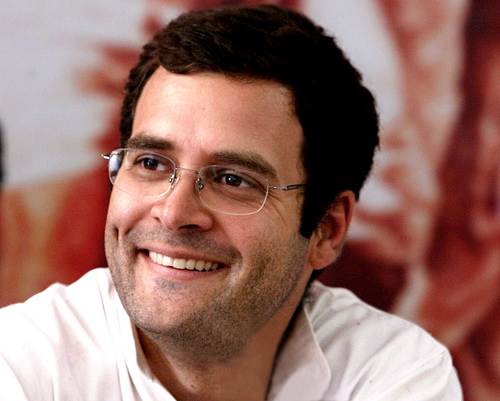
One of the more interesting books that I have read this year is Humphrey B Neill’s The Art of Contrary Thinking. The book was first published in the early 1950s and remains in print till today. One of the things that Neill talks about in the book is propaganda. Propaganda is essentially the official communication of a government to the public, which is designed in a way so as to influence public opinion.
As per Neill, propaganda that is “brought down to the level of a school child” works the best. Take the case of George Bush Junior and the American attack on Iraq. The American government propaganda(along with some help from the British) justified the attack on the ground that Iraq had weapons of mass destruction, which the country never did.
As Tim Vanech writes in the introduction to Neill’s book: “governments who wish to go to war prepare their case and go about manipulating the masses into required support.” The American government manipulated its masses by putting out the story of weapons of mass destruction in Iraq to justify the attack. The story worked because it was so simple that even a “school child” would have understood it—the Americans were the good guys going out there to save the world by killing the bad guys in Iraq. And who doesn’t want to listen to and believe in such a heroic tale?
In fact, all communication that works is normally very simple and is dumbed down to a level of a school child. Take the case of Narendra Modi’s election slogan — “Achche din aane waale hain, hum Modi ji ko laane waale hain.” The fact that the slogan was as simple as it was, was a major reason for its success.
In an economic environment which was extremely negative because of high inflation and slow economic growth, the positive slogan caught the imagination of the nation. Neill quotes another writer Gustave Le Bon, who wrote The Crowd: A Study of the Popular Mind, as saying: “Given to exaggeration in its feeling, a crowd is only impressed by excessive sentiments”. And the “excessive sentiments” in acche din aane waale hain influenced voters across large parts of India.
In fact, the slogan was not even original. It was lifted from Franklin Roosevelt’s election slogan in the 1932 US presidential elections “Happy Days Are Here Again.” The 1932 election was fought when the Great Depression was at its worst, and Roosevelt’s slogan offered a lot of hope to people and it worked. Roosevelt won and continued to remain President till 1945 (those were days when the two term limit for a US president did not apply).
What worked for Roosevelt, worked for Modi as well and in the 2014 Lok Sabha elections, the Bhartiya Janata Party won 282 seats. The slogan worked because the people believed in it. They believed that “happy days” were about to come. And Modi like a quintessential politician never explained anything, but promised everything. But all that was nearly one year ago. What the “acche din” slogan also did was that it set the bar very high for Modi. And now one year later, whenever anything negative happens, people are likely to ask (and are asking): “kahan hain acche din? (where are the happy days?)”
A Facebook friend recently wrote about his experience of visiting a petrol pump and the petrol pump attendant asking him: “sahab kahan aaye ache din? (Sir, where are the good days?)” He was referring to the price of petrol and diesel having gone up over the last one month. Petrol prices in Mumbai have gone up by more than 11% since mid April to a little over Rs 74 per litre.
And this is where the acche din slogan is likely to cause problems for the government if oil prices keep going up in the months to come. The price of the Indian basket of crude oil has gone up by 52% since mid January 2015. As on May 15, 2015, the price of the Indian basket was at Rs 4,097.73 per barrel.
When the oil prices were falling between May 2014 and January 2015, people close to the government even credited this fall in price to Narendra Modi. As a February 2015 editorial in the Business Standard had pointed out: “The president of the ruling party, Amit Shah, for example, repeatedly took credit on the campaign trail for lower prices, as did the Union home minister, Rajnath Singh. Even the prime minister has mentioned lower fuel prices, though he has specified that it is because of his “luck”.”
In some conversations that I had (along with some material shared over the social media) I realized that many people seemed to believe, that the Modi government has brought down petrol and diesel prices.
Those who believed that the government was responsible for bringing down the price of petrol and diesel, will now ask—if the government can bring down the price of petrol and diesel, it can also ensure that their prices do not go up. And they will also ask, “kahan hain acche din?” if prices continue to go up.
In fact, things are likely to get difficult for the government as and when the price of petrol and diesel crosses the May 2014 level. In May 2014, the price of diesel in Mumbai was Rs 65.21 per litre and that of petrol was Rs 80 per litre. If oil prices maintain their recent rise these levels will be breached very quickly.
The government can control this price rise by cutting the excise duty on petrol and diesel. Since October 2014, the government increased the excise duty on petrol and diesel four times. This was done to spruce up the revenues of the government and control the burgeoning fiscal deficit. Fiscal deficit is the difference between what a government earns and what it spends. What it also meant was that a dramatic fall in the price of oil was not passed on to the end consumer.
Once the petrol and diesel prices cross the May 2014, the pressure on government to control their price will go up. What will not help is the fact some of the top BJP leaders (Modi and Smriti Irani to name two) used the social media extensively in the years running up to May 2014, to criticize the petrol and diesel price hikes carried out by the Congress led UPA government. Also, Bihar elections scheduled for later this year will play a role on this front as well.
My guess right now is that if the oil price continues to rise, the government will have to start cutting the excise duty on petrol and diesel, if they want to ensure that people don’t start asking: “where are the acche din?”. Let’s see how this goes.
The column appeared on The Daily Reckoning on May 19, 2015



